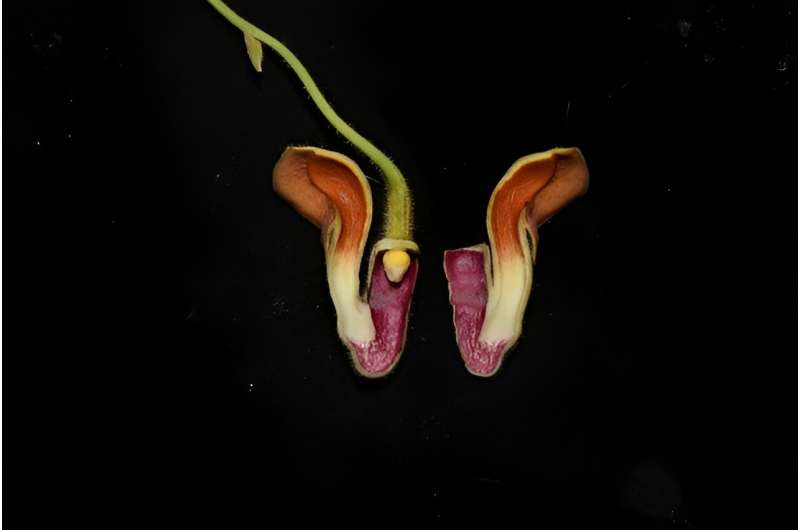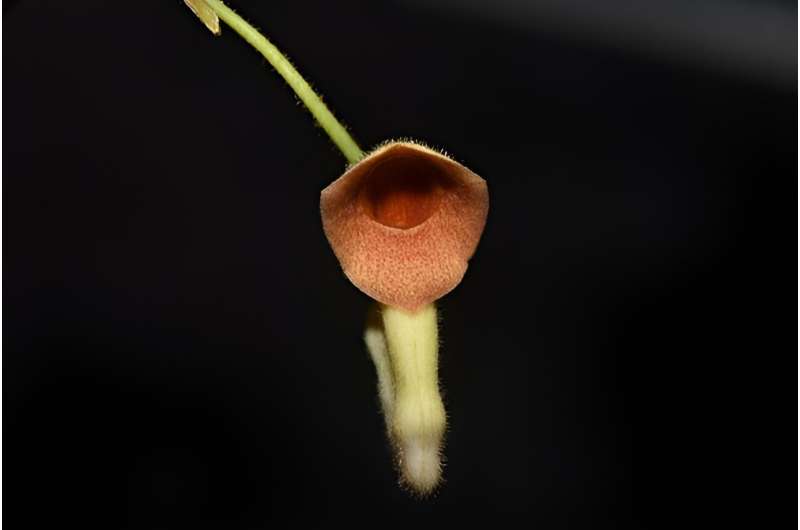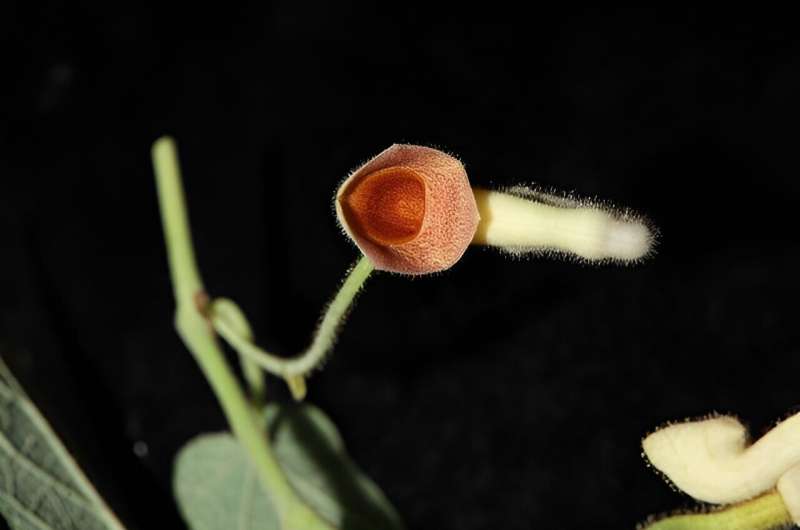Isotrema cangyuanense. Credit: Ma Xingda
Traditionally, the genus Aristolochia L. sensu lato is the largest genus in the family Aristolochiaceae. According to recent morphological and phylogenetic studies, Aristolochia subgen. Siphisia has been reintroduced as a separate genus Isotrema.
During a botanical exploration, researchers from the Xishuangbanna Tropical Botanical Garden (XTBG) of the Chinese Academy of Sciences collected an unknown species of Isotrema in the Menglai Grand Canyon, Cangyuan County, Yunnan Province. After careful morphological examination and literature review, they confirmed that it was a new species.
The new species was named as Isotrema cangyuanense to indicate its type locality, Cangyuan County and was published in Taiwania on August 24.
Isotrema cangyuanense is a perennial, woody liana. It is morphologically similar to Isotrema kunmingense and I. moupinense, but easily distinguished by its densely villous leaf blade. The adaxial leaf surface is densely villous, the inside of the calyx tube has dark reddish-brown papillae in the upper part, the calyx throat and the adaxial surface of the calyx limb are brownish, with dense dark reddish-brown papillae.
The new species is also similar to I. moupinense, but easily distinguished by its both surfaces of the leaf blade densely villous; the utricle is shorter; the inner surface of the tube brownish, with dense dark reddish-brown papillae in the upper part; the throat is brownish, with dense dark reddish-brown papillae, etc.
-
Isotrema cangyuanense. Credit: Ma Xingda
-
Isotrema cangyuanense. Credit: Ma Xingda
Isotrema cangyuanense is currently known only from Sigangli Village, Menglai Township, Cangyuan County, Yunnan Province, China, growing in limestone forests at about 1,200 m high elevation, on the southern slope, and the soil type is red soil.
The researchers proposed the conservation status of the new species as "Data Deficient," as field surveys are still limited.
More information: Xing-Da Ma et al, Isotrema cangyuanense, a new species of Aristolochiaceae from Yunnan, China, Taiwania (2023). DOI: 10.6165/tai.2023.68.323. taiwania.ntu.edu.tw/abstract/1943
Provided by Chinese Academy of Sciences


























